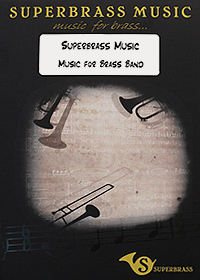Book Review - The Modern Brass Band
22-Apr-2006From the 1930s to the New Millennium
Dr. Roy Newsome
Ashgate Publications
406 Pages
Price: £17.99 plus postage and package
Given the importance that the brass band movement has played in the development of the social fabric of working class culture in this country over the past 150 years or more it comes as a great surprise that the amount of high quality reference material that has been published about it as a phenomenon is so pitiful.
There are of course some notable exceptions; Trevor Herbert's superb social history published by Oxford University Press in 2000 continues to be the most detailed and far reaching account of the movement as a cultural entity, whilst more extensive works, such as those of Geoffrey Brand and Arthur Taylor, celebrated rather than examined in great depth the movements importance. More colloquial publications from banding personalities have entertained, although none has really given insight into movements psyche.
Thankfully Dr Roy Newsome brings us ‘The Modern Brass Band' – From the 1930's to the New Millennium, printed by Ashgate Publications. 406 pages long, it is the companion to his earlier work ‘Brass Roots: One Hundred Years of Brass Bands and their Music which was published in 1998.
It is a long overdue work, extensively researched, very well produced and written in an open and enjoyable narrative style that retains warmth and affection for the subject matter yet maintains a detachment of purpose that allows for well balanced critical analysis.
Broken into four main parts with additional subsidiary chapters and appendices it covers the period from the beginning of the third decade of the 20th century to the end of the millennium.
The first starts where ‘Brass Roots' in theory ended and takes us to the end of the Second World War, an important axis point both culturally and in terms of organisation for the banding movement as a whole in the UK. Nothing was ever the same from 1945 onwards; from the decline in numbers from the movements Edwardian high water mark to the way in which banding finally became regionally organised and administered in light of the development of the National Championships under private sponsorship by the Daly Herald - a ‘working class' newspaper.
The second section entitled ‘Times of Change' chronicles the last great period of social change to directly effect the movement as a whole – from the pioneering welfare and industrial reforms of the Attlee inspired Labour Government to the end of the post war consensus and the emergence of market economy conservatism in 1980. Reading these chapters is like rediscovering the importance of brass banding to working class communities afresh. The development of the contest culture, the advancement of new compositional voices and of challenging repertoire and the sense of importance to cultural life that the brass band played through the media are recalled with a touch of nostalgia that is never rose tinted by the author and allows the reader as to wonder why and how things changed for better or for worse for the movement as a whole.
These were the years when brass bands formed part of the very glue that bound communities together; the decades before the advent of multi channel television and home computers, cheap foreign travel and consumer durables. This was the period when brass band contests were seen as ‘events' not just to compete at, but to attend as listeners and supporters, when recordings were produced in black vinyl and bands were regular entertainment on the radio and even television.
The bands mirrored this too: mature, male, predominately white working class, secretive, but almost magically untouchable. On the flip side, it was also the period when the last, less wholesome vestiges of working class attitudes still ran rampant, both in society and banding: sexism, petty racism and nepotism were still integrally intertwined in bandings enclosed communities too.
The pictures in this section of the book illustrate the dichotomies to perfection: Geoffrey Brand conducting the sponsored, Black Dyke at the Albert Hall in 1972: A packed hall, men in suits and ties, not many female faces in a sea of mature almost exclusively white middle aged people: The band, in its own way, the same.
The third section – ‘The Years of Maturity' (1981 - 2000) brings the cultural story of the brass band movement to the end of the century. Here the author chronicles the decline of the movement as an integral indelible working class entity in relation to the new and at times exciting developments it faced as it began to stand alone in both musical and cultural terms.
The decimation of the mining and manufacturing industry inextricably led to a terminal decline in the ‘community' based activities that has sustained that movement for over 40 years: the end of Belle Vue and the decline of the Spring Festival, the cut backs in television and radio appearances, the end of the Brass Band Club and Alex Owen Scholarships, the decline of the solo and quartet contests. Conversely it also saw the development of festival based contests such as Pontins, the expansion of higher education courses geared towards brass, the development of youth banding and the emergence of cheap CD recordings and manufacture and the rise of European banding. The old Praetorian Guard of Mortimer, Hargreaves and Boddington had died to be replaced by the youthful talents of Snell, Watson, King and the Childs.
The final section takes a long overdue look at the development of the banding movement throughout the world. Like the rest of the book it is done with warmth but realistic appreciation of what other countries have achieved, and most importantly, what they still need to achieve. It is an excellent appraisal.
Dr. Roy Newsome should wholeheartedly be congratulated, for he has produced a quite wonderful, insightful book that should form the backbone of any brass music students reading list and deserves to be seen on the bookshelf of anyone who has more than a passing regard to the brass band movement, its history and its future.
It does have its faults (there are errors of course, whilst the Personalia appendix is eclectic to say the least. It would also have also been worth it to produce a much more extensive and detailed results appendix), but these though are minor grumbles in a superb reference publication that adds greatly to the understanding of our movements place in British cultural life.
It ends at the start of the new millennium: an apposite cut off point but also an ideal starting one for what we hope will be the author's next challenge.
Iwan Fox









